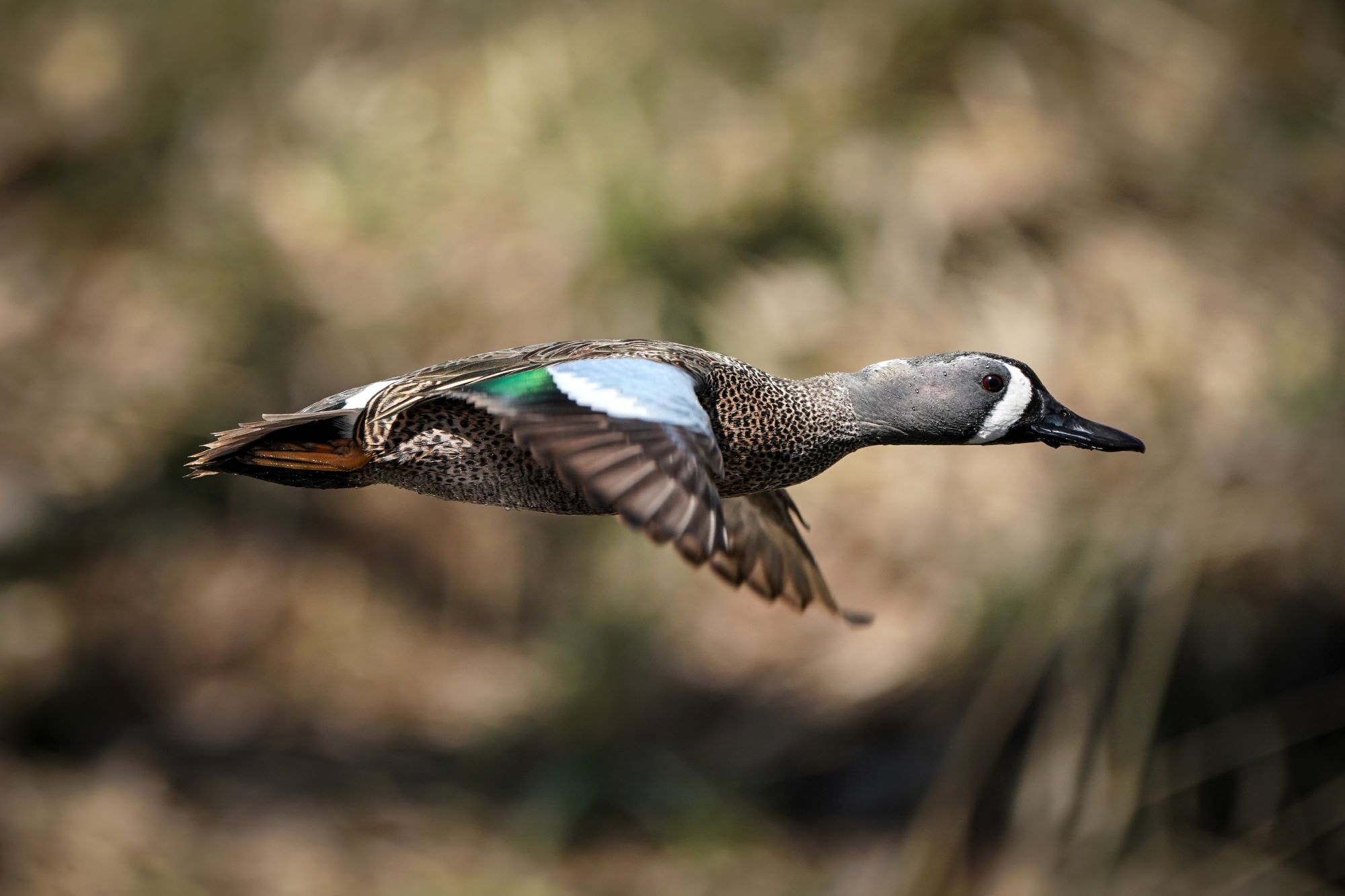
Blue-winged Teals in Utah
Blue-winged Teals, a species of small dabbling ducks, are a notable and vibrant presence in Utah, particularly in the northern regions of the state where they breed. Known scientifically as Spatula discors, these ducks are distinguished by their striking plumage and agile foraging behaviors. Male Blue-winged Teals are easily recognizable during the breeding season by their bold white facial crescent and blue-gray heads, along with speckled brown bodies and bright blue patches on their wings. Females, while more subdued in color with mottled brown plumage, also display the characteristic blue wing patches, making them identifiable. In Utah, especially in the northern wetlands, Blue-winged Teals are commonly found in shallow marshes, ponds, and along the edges of lakes, where they find ideal breeding grounds and abundant food sources.
The diet of Blue-winged Teals primarily consists of seeds and aquatic invertebrates, which they skillfully forage by dabbling on the water’s surface or tipping forward to feed underwater. In Utah’s diverse wetland habitats, these ducks contribute significantly to the ecosystem by controlling insect populations and aiding in the dispersal of aquatic plants. Their feeding habits play a crucial role in maintaining the health of these ecosystems, and their presence indicates a well-balanced, thriving wetland environment.
Breeding is a crucial aspect of the Blue-winged Teal's life cycle in Utah. During the breeding season, these ducks form monogamous pairs and the female selects a nesting site, usually in dense vegetation near water. She builds a nest on the ground, typically a shallow depression lined with down feathers. The female lays an average of 6 to 10 eggs and incubates them for about three to four weeks. Once hatched, the ducklings are precocial, able to swim and feed themselves almost immediately, though they remain under the care of the mother for several weeks.
Conservation of wetland habitats in northern Utah is vital for the breeding success and overall wellbeing of Blue-winged Teals. These environments provide essential resources for nesting, feeding, and shelter. However, wetlands face threats from development, pollution, and changes in water management. Efforts to protect and restore these habitats are key to ensuring healthy populations of Blue-winged Teals and supporting the diversity of other wildlife species dependent on these ecosystems.
For birdwatchers and nature enthusiasts, observing Blue-winged Teals in Utah, particularly during the breeding season, is a delightful experience. Their vibrant colors, especially the males' striking plumage, and their unique behaviors, such as intricate courtship displays and diligent care of the young, make them a fascinating subject. The presence of Blue-winged Teals in Utah's northern wetlands adds an exciting dimension to the state's birdlife, showcasing the ecological importance and diversity of these habitats. Observing Blue-winged Teals in these settings not only provides insight into the lives of these remarkable birds but also underscores the significance of preserving the natural habitats that sustain Utah's diverse wildlife.